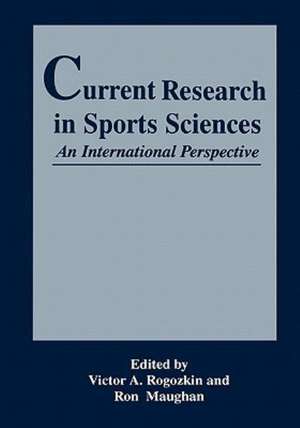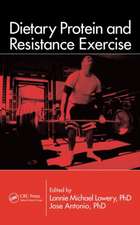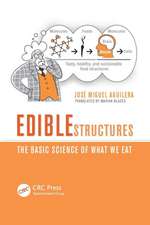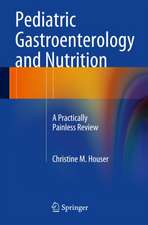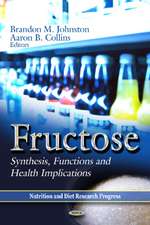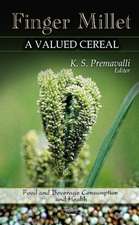Current Research in Sports Sciences
Editat de R. Maughan, V.A. Rogozkinen Limba Engleză Paperback – 28 oct 2010
| Toate formatele și edițiile | Preț | Express |
|---|---|---|
| Paperback (1) | 946.21 lei 6-8 săpt. | |
| Springer Us – 28 oct 2010 | 946.21 lei 6-8 săpt. | |
| Hardback (1) | 959.36 lei 6-8 săpt. | |
| Springer Us – 30 oct 1996 | 959.36 lei 6-8 săpt. |
Preț: 946.21 lei
Preț vechi: 1153.91 lei
-18% Nou
Puncte Express: 1419
Preț estimativ în valută:
181.14€ • 186.39$ • 152.69£
181.14€ • 186.39$ • 152.69£
Carte tipărită la comandă
Livrare economică 01-15 martie
Preluare comenzi: 021 569.72.76
Specificații
ISBN-13: 9781441932556
ISBN-10: 1441932550
Pagini: 360
Ilustrații: X, 346 p.
Dimensiuni: 178 x 254 x 19 mm
Greutate: 0.62 kg
Ediția:Softcover reprint of hardcover 1st ed. 1996
Editura: Springer Us
Colecția Springer
Locul publicării:New York, NY, United States
ISBN-10: 1441932550
Pagini: 360
Ilustrații: X, 346 p.
Dimensiuni: 178 x 254 x 19 mm
Greutate: 0.62 kg
Ediția:Softcover reprint of hardcover 1st ed. 1996
Editura: Springer Us
Colecția Springer
Locul publicării:New York, NY, United States
Public țintă
ResearchDescriere
There are two main reasons for pursuing research in the Sports Sciences. Firstly, by studying responses to exercise, we learn about the normal function of the tissues and or gans whose function allows exercise to be performed. The genetic endowment of elite ath letes is a major factor in their success, and they represent one end of the continuum of human performance capability: the study of elite athletes also demonstrates the limits of human adaptation because nowhere else is the body subjected to such levels of intensive exercise on a regular basis. The second reason for studying Sports Science is the intrinsic interest and value of the subject itself. Elite performers set levels to which others can as pire, but even among spectators, sport is an important part oflife and society. of top sport and elite performers, there is also another reason Apart from the study for medical and scientific interest in sport. There is no longer any doubt that lack ofphysi cal activity is a major risk factor for many of the diseases that affect people in all coun tries: such diseases include coronary heart disease, obesity, hypertension, and diabetes. An increased level of recreational physical activity is now an accepted part of the prescription for treatment and prevention of many illnesses, including those with psychological as well as physical causes. An understanding of the normal response to exercise, as well as of the role of exercise in disease prevention, is therefore vital.
Cuprins
IDENTIFICATION AND DEVELOPMENT OF SPORTING TALENT: Talent Identification: Identification and Development of Talent in Sport (V.K. Balsevich). How Expert Coaches Develop Talent throughPractice (J.H. Salmela). Selection of Children for Sport (W. Starosta). Control of Motor Function and Its Role in Selection and Orientation of Young Sportsmen (O.M. Shelkov, G.A. Hrisfanov). Physiological Basis of Exercise for Young Athletes: Neurological and Pathopsychological Criteria for Sport Selection (T.P. Koroleva). Nutritional Considerations in the Young Athlete: Nutrition for Young Athletes (R.J. Maughan, S.M. Shirreffs). Fat and Fat Distribution in Elite Rhythmic Gymnasts (R. Pieter et al.). Body Composition and Nutritional Intake in Belgian Volleyball Players (M. Goris et al.). REACHING AND MAINTAINING PEAK PERFORMANCE: Pedagogical Aspects of Elite Performance: Mental Training for Sport and Life (L.E. Uneståhl). Professional Sport as a Subculture (N.I. Ponomarev). Psychopedagogical Analysis of Individual Styles of Operational Problem Solving (A.V. Rodionov).Mental Training for Sports and Wellness: Mental Relaxation -Neurodynamic Markers and Psychophysiological Mechanisms (P.V. Bundzen et al.). Longacting Regulators of Mental State in Elite Sport: Control and Optimization of Their Influence (G.B. Gorskaya). Effects of Mental Training on the Sense of Rhythym (M.V. Yermoaleva). Biomechanical Aspects of MotorActivity: Anatomical Data for Biomechanical Calculation (I.M. Kozlov et al.). Control of Movement (S.P. Evseev). The Application of Computer Technologies to Management of Special Training in Cyclic Sports (V.V. Kleshnev). Functional Capacity of Athletes: Nutritional Preparation for Sports Performance: The Elite Performer (R.J. Maughan, L.M. Burke). Cumulative Effects of the Administration of Creatine and Amino Acid Mixtures duringTraining (N.I. Volkov et al.). Effects of Products of Enhanced Biological Value on the Performance of Athletes (A. Pshendin et al.). PHYSICAL ACTIVITY AND WELLNESS: Exercise Fitness and Health: Physical Activity: An Important Contributor to Health and Function (S. Blair). Valuables of Physical Culture in a Healthy Lifestyle (L.I. Lubysheva). Physical Activity Level of Schoolaged Children in St. Petersburg (A.G. Komkov et al.). Physiological Basis of Exercise for Middleaged Adults: Effect of Exercise Training and Acute Acute Exercise on EssentialHypertensives (R.M. Dibner et al.). Nutrition, Exercise, and Health: Nutrition, Moderate Exercise and Health (A.E. Hardman). Metabolicand Ventilatory Effects of Caffeine during Light Intensity Exercise in Trained and Sedentary Low Habitual Caffeine Users (H.J. Engels et al.). 22 additional articles. Index.
